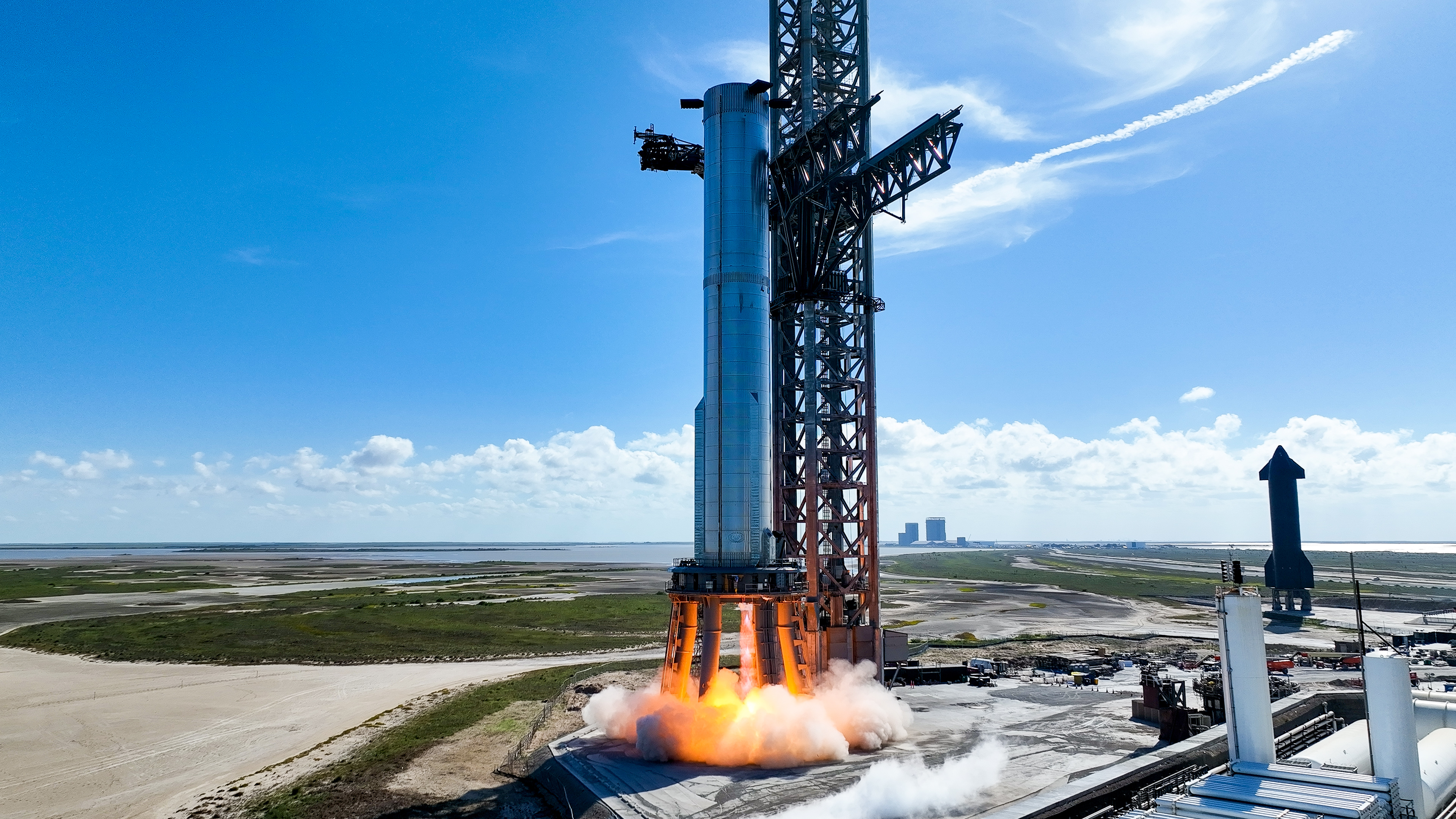SpaceX's Starship won't launch on 1st orbital test flight this month

The first orbital test flight of SpaceX's Starship vehicle won't get off the ground in August.
SpaceX is targeting a six-month window that opens on Sept. 1 for the highly anticipated mission, according to a radio-spectrum license application that the company filed with the U.S. Federal Communications Commission (FCC).
That license was granted on Wednesday (Aug. 10), according to the Twitter account FCC Space Licenses, which keeps tabs on such things. But this approval is not the final regulatory hurdle that Starship must clear on the way to the launch pad.
Photos: SpaceX lifts huge Super Heavy rocket onto launch stand
"Reminder, this is not the same as a launch license. It is a specific radio license for the test vehicles and does not indicate a change in status. Please do not make a YouTube video or write a 20,000 [word article] about this," FCC Space Licenses, which is not a U.S. government account, wrote in another Wednesday tweet. (This article is only about 400 words long, so hopefully it's still in bounds.)
SpaceX apparently still hasn't received a launch license for the Starship orbital test flight, which will lift off from the company's Starbase facility in South Texas. Launch licenses are the purview of the U.S. Federal Aviation Administration, which recently wrapped up a lengthy environmental assessment of Starship activities at the site.
Starship consists of a giant first-stage booster called Super Heavy and a 165-foot-tall (50 meters) upper-stage spacecraft known as Starship. Both elements are designed to be fully reusable, and both will be powered by SpaceX's next-generation Raptor engines — 33 for Super Heavy and six for Starship.
Breaking space news, the latest updates on rocket launches, skywatching events and more!
The duo that will fly the coming orbital mission are Booster 7 and Ship 24. SpaceX has begun prepping both prototypes for the task; for example, the company conducted "static fire" engine tests with both vehicles on Tuesday (Aug. 9) at Starbase.
Booster 7 lit just one of its 33 engines on Tuesday, and Ship 24 fired up two of its six Raptors. So a lot of work remains before SpaceX clears the duo for an orbital flight — meaning it was never likely that the mission would lift off in August, even if all the paperwork were already in order.
There is a high-profile launch scheduled for this month, however: NASA is currently targeting Aug. 29 for the liftoff of Artemis 1, the first mission in its Artemis program of moon exploration. Artemis 1 will use a Space Launch System rocket to send an uncrewed Orion capsule on a roughly six-week mission to lunar orbit and back.
Mike Wall is the author of "Out There" (Grand Central Publishing, 2018; illustrated by Karl Tate), a book about the search for alien life. Follow him on Twitter @michaeldwall. Follow us on Twitter @Spacedotcom or on Facebook.

Michael Wall is a Senior Space Writer with Space.com and joined the team in 2010. He primarily covers exoplanets, spaceflight and military space, but has been known to dabble in the space art beat. His book about the search for alien life, "Out There," was published on Nov. 13, 2018. Before becoming a science writer, Michael worked as a herpetologist and wildlife biologist. He has a Ph.D. in evolutionary biology from the University of Sydney, Australia, a bachelor's degree from the University of Arizona, and a graduate certificate in science writing from the University of California, Santa Cruz. To find out what his latest project is, you can follow Michael on Twitter.
